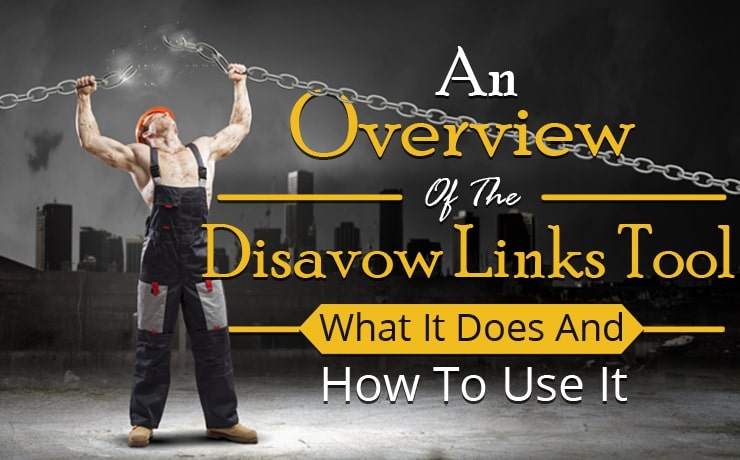An Overview Of The Disavow Links Tool | What It Does And How To Use It

Chad Faith
Director of Content

The Disavow Links Tool is an online tool from Google that allows webmasters to ignore in-bound links from their website. This is an important instrument for webmasters trying to improve and maintain their rankings on Google’s search pages, but it can be a little tricky to understand without some background. Read on then and we’ll take a look at why the disavow links tool might be necessary and how you should go about using it.
A Brief History of Link Building
As a webmaster trying to increase your visibility on Google, one of the best strategies has always been to build high-quality links pointing at your pages. The more in-bound links to your site, the more easily Google will be able to find your pages to index, and the more authority you will be perceived to have (because people link to sites they like). Here is a beginner’s guide to link building from MOZ, but in case you don’t have time for that, the basic rule is more links equate a good thing.
Unfortunately though, at some point webmasters began to take advantage of that by creating as many links as they possible could to their sites by buying them from other site owners, by swapping them, by spamming forums and through all manner of other nefarious means. This meant that the sites that rose to the top were the sites with the most spammy webmasters – which wasn’t what Google wanted.
Thus Google began improving its algorithms to make sure that links looked natural and that they were on high-quality sites with relevant content. Sites that were seen to be trying to ‘game’ the system by manipulating their links profile ended up getting penalized and sent down the rankings.
The Birth of Negative SEO and Disavowing
All good and well, but this also lead to the birth of ‘negative SEO’. Negative SEO is basically ‘anti-SEO’ performed on a competitor’s website, accomplished by building lots of spammy links to their site on purpose. In other words, you ‘frame them’ for trying to manipulate Google and Google responds by penalizing that site, allowing the assailant to move up a spot. Of course some innocent and well-meaning links could also unintentionally cause damage to a site if it coincidentally ‘looks’ like spam.
Here’s a little more about negative SEO and how to protect yourself against it.
To cut a long story short, the Google ‘disavow tool’ was created in response to negative SEO and collateral damage. By allowing webmasters to ‘disavow’ a link – thus removing it from consideration by Google – site owners would now have a way to avoid being penalized for links they didn’t build.
Of course some site owners will also use the disavow tool to remove links that they have since reconsidered. It is also a common practice to use this tool when some inferior SEO companies hurt their clients’ rankings with dangerous links, as the site owners can then reverse the damage with the disavow tool.
Using the Tool
If you want to use the disavow tool today, here is a step by step guide by Search Engine Watch on how to do just that. But remember though that Google actually prefers you to try and remove the links yourself first though, so contact the webmaster to begin with and then only use the tool if that doesn’t get the result you’re hoping for.
 Free
Consultation
Free
Consultation Free
Google Ads Audit
Free
Google Ads Audit







